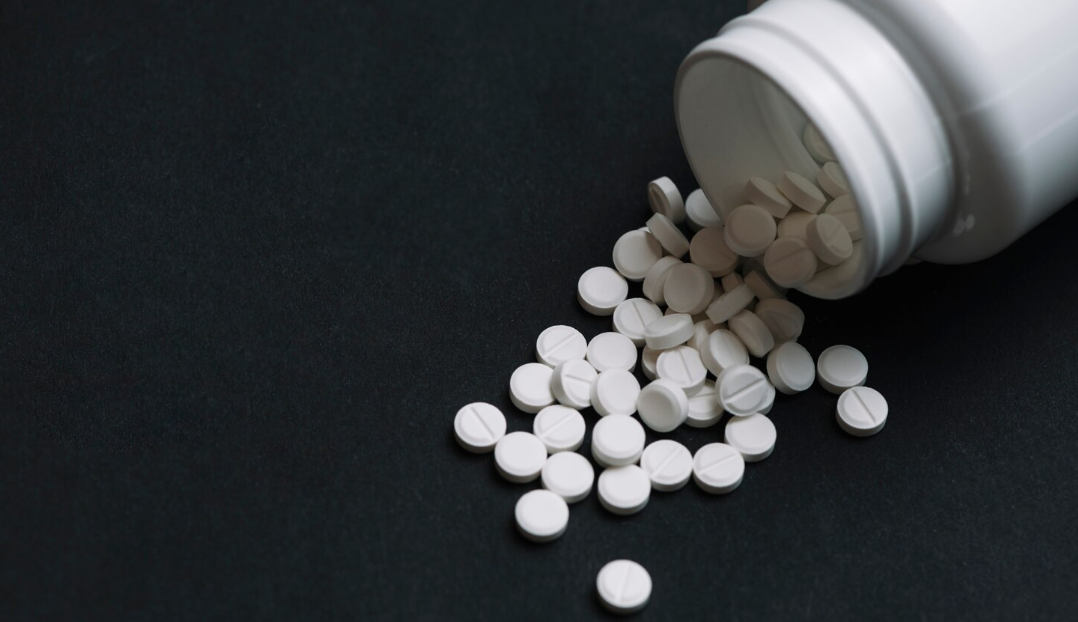Top 10 Marijuana Addiction Statistics

- Marijuana is the most commonly used illicit drug in the world, with around 192 million users worldwide.
- 1 in 10 marijuana users will become addicted to the drug, with the risk increasing to one in six for those who start using the drug in their teens.
- The number of people seeking treatment for marijuana addiction has increased by almost 50% in the past decade.
- Marijuana use has been linked to an increased risk of heart attack, with a 4.8 times higher risk of heart attack within the first hour of use.
- 11% of marijuana users will become addicted to the drug.
- Marijuana use during pregnancy can lead to negative effects on the developing fetus, including low birth weight and developmental delays.
- Around 30% of people who use marijuana have a genetic predisposition to addiction.
- In 2019, there were over 300,000 emergency department visits related to marijuana use in the United States alone.
- The potency of marijuana has increased dramatically in recent years, with some strains containing up to 25% THC.
- In 2018, there were over 4 million people in the United States who reported using marijuana daily.


How popular is marijuana?
- Approximately 52% of American adults have tried marijuana at least once in their lives.
- In a global survey, 42% of respondents reported having used marijuana at some point.
- The United Nations estimates that around 4% of the world's population (aged 15-64) uses marijuana annually.
- A Gallup poll found that 12% of US adults admitted to being current marijuana users, while another study revealed that nearly 22 million Americans use the drug monthly.
- According to a Pew Research Center survey, approximately two-thirds (67%) of Americans support the legalization of marijuana for recreational use.
- In Canada, where marijuana was legalized in 2018, roughly one in five Canadians aged 15 and older reported using cannabis within the past three months.
Prevalence of Marijuana Addiction
- According to the National Institute on Drug Abuse (NIDA), about 9% of marijuana users become addicted, with this number increasing to around 17% for those who start using during their teenage years.
- The Substance Abuse and Mental Health Services Administration (SAMHSA) reports that approximately 4.2 million people in the United States met the criteria for a marijuana use disorder in 2018.
- A study published in JAMA Psychiatry found that 2.5% of adults in the United States experienced a marijuana use disorder at some point in their lives.
- The World Health Organization estimates that globally, about 13 million people suffer from cannabis dependence, representing about 6.7% of all drug dependence cases.
- Research conducted by the University of Queensland found that nearly one-third (30%) of regular marijuana users may have some level of addiction, with an estimated prevalence rate of around 1.3% among adults aged 18 to 64 years old.

Marijuana Addiction Statistics & Facts by Gender
- According to a study published in Drug and Alcohol Dependence, men are nearly twice as likely as women to develop a marijuana use disorder, with 14.9% of male users experiencing addiction compared to 7.7% of female users.
- The National Survey on Drug Use and Health (NSDUH) found that men are more likely than women to report daily or almost daily marijuana use, with 6.6% of men reporting this frequency compared to 3.1% of women.
- A study conducted by the University at Buffalo's Research Institute on Addictions revealed that gender differences in marijuana addiction might be linked to the way the drug affects dopamine levels in the brain, which could explain the higher prevalence rate among men.
- Research published in the Journal of Abnormal Psychology showed that while males had higher rates of marijuana use disorders overall, females were more likely to experience withdrawal symptoms and negative social consequences related to their marijuana use.
- Another study published in Addiction Biology found that female rats were more sensitive to the rewarding effects of THC, suggesting that women may be more susceptible to developing an addiction due to these heightened pleasurable sensations.
How Many People Have Tried Using Marijuana?
- A 2017 National Survey on Drug Use and Health (NSDUH) revealed that 45% of Americans aged 12 or older, approximately 123 million people, have tried marijuana at least once in their lives.
- The Global Drug Survey conducted in 2020 found that 58% of respondents from around the world reported having used marijuana at some point in their lives.
- A study published in the International Journal of Drug Policy indicated that about 39% of adults across European countries had tried marijuana at least once.
- According to the Australian Institute of Health and Welfare's National Drug Strategy Household Survey, approximately 36% of Australians aged 14 years and over have used cannabis in their lifetime.
- A report from the Substance Abuse and Mental Health Services Administration (SAMHSA) showed that among US teenagers aged 12 to 17, about 15.6% had tried marijuana at least once.
Marijuana Addiction Statistics & Facts by Ethnicity
- According to a study published in the Journal of Ethnicity in Substance Abuse, African Americans had the highest rate of marijuana use disorder at 14.5%, followed by Hispanics at 11.8%, and Caucasians at 9.5%.
- The National Survey on Drug Use and Health (NSDUH) reported that Native Americans and Alaska Natives have the highest prevalence of marijuana use, with approximately 22.1% using it within the past year, which may contribute to higher addiction rates among these populations.
- A study in Addictive Behaviors found that Asian Americans had the lowest rates of marijuana use disorder, with only 4.3% meeting the criteria for addiction.
- Research conducted by SAMHSA revealed that mixed-race individuals had a higher likelihood of developing a marijuana use disorder, with an estimated 12.6% experiencing addiction.
- A study published in Drug and Alcohol Dependence showed that among Hispanics, foreign-born individuals had lower rates of marijuana addiction (7.2%) compared to their US-born counterparts (13.2%).
Marijuana Addiction Rate by Age Group
- According to the National Institute on Drug Abuse (NIDA), the addiction rate among marijuana users who start during their teenage years is approximately 17%, while the overall addiction rate for all users is about 9%.
- A study published in The American Journal of Psychiatry found that individuals who began using marijuana before the age of 18 were four to seven times more likely to develop a marijuana use disorder than those who started using it as adults.
- The Substance Abuse and Mental Health Services Administration (SAMHSA) reports that young adults aged 18 to 25 have the highest prevalence of marijuana use disorders, with an estimated 7.5% experiencing addiction.
- Research conducted by Duke University found that adolescents who used marijuana frequently were at a higher risk for developing long-term addiction, with nearly one-third becoming dependent by age 21.
- A study in the Journal of Child Psychology and Psychiatry showed that early-onset marijuana users (those who started before age 15) had a higher risk of developing a substance use disorder in adulthood, with a prevalence rate of around 35%.
- According to a report by the Centers for Disease Control and Prevention (CDC), older adults aged 65 and above had the lowest rates of marijuana use disorders, with less than 1% experiencing addiction.
The Effects of Marijuana on Teenagers
- According to the National Institute on Drug Abuse (NIDA), teenagers who use marijuana regularly are 60% less likely to graduate from high school or obtain a college degree compared to their non-using peers.
- A study published in The Lancet Psychiatry found that teens who smoke marijuana daily are 7 times more likely to attempt suicide than those who don't use the drug.
- Research conducted by the University of Montreal revealed that 9% of teenage marijuana users experience cognitive decline, particularly in areas related to memory, attention, and decision-making.
- The American Psychological Association reported that adolescents who frequently use marijuana have a 38% higher risk of developing depression in adulthood.
- A study published in the Journal of Neuroscience found that regular marijuana use during adolescence can lead to an 8.4% reduction in the volume of the hippocampus, which is responsible for learning and memory processes.
- According to a report by the American Academy of Pediatrics, teenagers who start using marijuana before age 16 have a 68% increased risk of becoming addicted compared to those who start using later in life.

Marijuana-Related Crimes Statistics
- According to the Federal Bureau of Investigation (FBI), in 2019, there were approximately 545,602 marijuana-related arrests in the United States, accounting for 35% of all drug-related arrests.
- A study published in the Journal of Drug Issues found that in states where marijuana has been legalized, there was a decrease of up to 20% in violent crime rates and a 15% reduction in property crime rates.
- The Drug Policy Alliance reports that since the legalization of recreational marijuana use in Colorado and Washington, both states have experienced a decline in youth marijuana usage by up to 10%, as well as a decrease in traffic fatalities by nearly 8%.
- According to the American Civil Liberties Union (ACLU), Black Americans are nearly four times more likely to be arrested for marijuana possession than their white counterparts, despite similar usage rates across races.
- In a report by the RAND Corporation, it was estimated that around 30% of revenues from illegal drug sales are related to marijuana, with organized crime groups relying heavily on these profits.
- A study conducted by the University at Albany revealed that between 1995 and 2015, states with medical marijuana laws experienced an average reduction of 13% in violent crime rates and a 10% decrease in property crime rates.
Marijuana Overdose Statistics & Facts
- According to the National Institute on Drug Abuse (NIDA), a marijuana overdose is extremely rare, with no reported cases of fatal overdose directly attributable to marijuana use.
- A study published in Clinical Toxicology found that between 2010 and 2017, there was a 150% increase in calls to poison control centers related to marijuana exposure, but only 0.3% of these cases resulted in severe outcomes.
- Research conducted by the University of Mississippi found that the median lethal dose (LD50) of THC is estimated to be around 30 milligrams per kilogram of body weight; however, this value has not been confirmed in humans due to ethical concerns.
- According to a study published in Addiction, approximately 1.2% of emergency department visits related to drug use in the United States involved marijuana or synthetic cannabinoids.
- A report by the Substance Abuse and Mental Health Services Administration (SAMHSA) revealed that between 2006 and 2010, an average of 455 people per year visited emergency departments due to unintentional marijuana ingestion.
FAQs
Is marijuana considered a "gateway drug"?
Some studies suggest that marijuana use may increase the likelihood of trying other, more potent substances. However, the majority of marijuana users do not progress to using harder drugs, and many factors contribute to the progression of substance use, including genetics, environment, and social influences.
Can marijuana addiction be treated?
Yes, treatment options for marijuana addiction include behavioral therapies such as cognitive-behavioral therapy (CBT), contingency management, and motivational enhancement therapy. In some cases, support groups or 12-step programs like Marijuana Anonymous can also be helpful.
Does legalization of marijuana lead to increased addiction rates?
Research on this topic is limited and somewhat inconclusive. While some studies have shown an increase in marijuana use following legalization, others have found no significant changes in addiction rates. Factors such as public awareness campaigns and responsible regulation may play a role in mitigating potential increases in addiction rates.
How does marijuana compare to alcohol or tobacco in terms of addiction risk?
While all three substances carry the risk of dependence and addiction, research suggests that nicotine found in tobacco products has a higher rate of addiction than both alcohol and marijuana. Alcohol's addictive potential falls between that of nicotine and marijuana.
Are there any withdrawal symptoms associated with quitting marijuana?
Yes, some individuals who quit using marijuana after prolonged use may experience withdrawal symptoms such as irritability, insomnia, loss of appetite, anxiety, cravings for the drug, and physical discomfort. These symptoms typically peak within the first week after quitting and usually subside within two weeks.
Can medical cannabis patients become addicted to marijuana?
Although medical cannabis is used to treat various conditions under a healthcare professional's guidance, patients are still at risk for developing dependence or addiction, especially if they have a history of substance use disorders. It is crucial for patients and healthcare providers to closely monitor usage and address any concerns related to dependence or addiction.
Are certain strains of marijuana more addictive than others?
While there is no definitive answer to this question, some studies suggest that strains with higher THC content may pose a greater risk of addiction due to their more potent psychoactive effects. However, individual susceptibility to addiction can vary greatly, and other factors such as frequency of use and genetics play a role in the development of dependence or addiction.
What age group uses marijuana the most?
According to various studies and surveys, marijuana use is most prevalent among young adults, typically within the age range of 18 to 25 years old. However, usage rates can vary by country, cultural factors, and legal restrictions.
What is considered heavy marijuana use?
Heavy marijuana use is generally considered to be the frequent and consistent consumption of marijuana over an extended period. While there isn't a universally agreed-upon definition, heavy use often refers to daily or near-daily use. Some studies define heavy users as those who consume marijuana on 20 or more days per month. It's important to note that heavy use may increase the risk of negative health effects and the potential for developing a dependence on marijuana.
How long has marijuana been around?
Marijuana has a long history, dating back thousands of years. The cannabis plant, from which marijuana is derived, is believed to have originated in Central Asia. The earliest evidence of cannabis use goes back to around 5000 BCE when the plant was cultivated for its fiber and as a food source.
The psychoactive properties of marijuana, due to its THC content, were discovered later. The first recorded use of marijuana for its psychoactive effects dates back to around 2700 BCE in ancient China. Since then, marijuana has been used for various purposes across different cultures and regions, including medicinal, spiritual, and recreational uses.
Conclusion
Marijuana use and addiction present a complex landscape, with varying rates of prevalence across age groups, genders, and ethnicities. While marijuana is increasingly accepted for its medicinal and recreational purposes, it remains crucial to raise awareness about the potential risks of dependence and addiction. Understanding the factors contributing to marijuana addiction can help inform public policy decisions, prevention strategies, and treatment options. As more countries consider legalizing marijuana or changing their drug policies, ongoing research will be critical in understanding the long-term effects of these changes on society and individuals' well-being.
References
https://drugabusestatistics.org/marijuana-addiction/
https://www.addictioncenter.com/drugs/marijuana/
https://www.drugfreeworld.org/drugfacts/marijuana/international-statistics.html








.png)
.png)
.png)
.png)